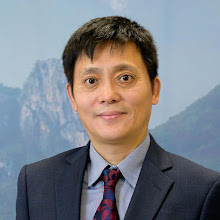World Acupuncture Day will be celebrated in Paris at the building of United Nations Educational, Scientific, and Cultural Organization (UNESCO) , on the 15th of November 2018. It was organized to commemorate the eighth anniversary of the inscription of acupuncture and moxibustion, in November 2010, into the UNESCO Representative List of Intangible Cultural Heritage of Humanity.
Acupuncture
is getting popular worldwide over the last few decades. Although most people know acupuncture
originates from China, many are still curious about how and when acupuncture
actually first started. As an
acupuncturist we often been asked by patients as to how old acupuncture was and
who invented it, etc. There
is no simple answer to these questions. Let’s
review the acupuncture history before the World Acupuncture Day.
Unlike most
other complementary therapies, it’s not the invention by just one or few persons;
it’s the work of many people over a long period of time. The origin of acupuncture could date back to
as far as over four thousand years to Neolithic Age. During that period, the Chinese ancestors
started using sharp stone to stimulate certain points on the body for pain
relief. This was called Pianshi therapy.
Since then, improvements were made from using sharp stone for point stimulation
to stone needles, and then to needles made from jade and bone. According to written literature, the first
bronze acupuncture needles were invented by Fuxi Emperor when he was in power
during 2400 – 2370 BC. There were also other classical texts that recorded that
the nine types of bronze needles were invented by the Yellow Emperor during
2337 – 2307 BC. Many acupuncture theories and treatment methods were recorded
in the Yellow Emperor’s Canon of Medicine (Huang Di Nei Jing), one of the most
representative classical texts in Traditional Chinese Medicine. Acupuncture knowledge and experience were
handed down from generation to generation with more and more literature and
classical books were published.
Since
6th century AD, acupuncture knowledge had spread to Korea, Japan, Indonesia,
Vietnam and other neighbouring Southeast Asia countries. With the development of maritime trade, diplomatic
and missionary liaisons, acupuncture began to spread to the Western countries
such as The Netherlands, France, England, Italy and Germany from the 16th
century. In the first half of the nineteenth century, there was a flurry of
interest in both America and Britain, and a number of publications appeared in
the scientific literature including a Lancet editorial article entitled
‘Acupuncturation’ [1]. However, acupuncture had only been practised
at a small scale then, and not until 1970’s that such practice had been
becoming more and more popular.
In 1971, an American journalist was given acupuncture
treatment to help aid his recovery from an emergency appendectomy in China. After
returning back to the US, he had written an article in the New York Times about
his whole experience[2]. This
had aroused an ‘acupuncture heat’ in both the US and other western
countries. Many people from different
nationality came to China to learn acupuncture.
Since then, the popularity of acupuncture had grown worldwide. At present, there are practitioners in 182
countries and
districts practising acupuncture. In 2003 World HealthOrganization (WHO) published a report
about clinical trials research, 91 diseases and conditions were listed as
indications of acupuncture. In 15th of November 2010
acupuncture was listed to Intangible Cultural Heritage of Humanity by UNESCO
The
demand for acupuncture training had also been fast growing in Europe, North
America and Australia. Since
written records of acupuncture began in China, many great
acupuncture masters
had written and passed down their precious clinical experience to their successors. Some Chinese acupuncture
books had been translated into English and other foreign languages, but
unfortunately only a
small part acupuncture classical text has been translated into other languages. We hope more accurate translation acupuncture monographs
will be published in the future. Review the acupuncture history, we always learned more about
acupuncture from our ancestors.
To
understanding acupuncture history and remember World Acupuncture Day.
Reference :
1.
Anon. Acupuncturation. Lancet. 1823.; November 9. : 200. –1.
2.
Reston J. Now about my operation in
Peking. New York Times 1971;1:6


No comments:
Post a Comment